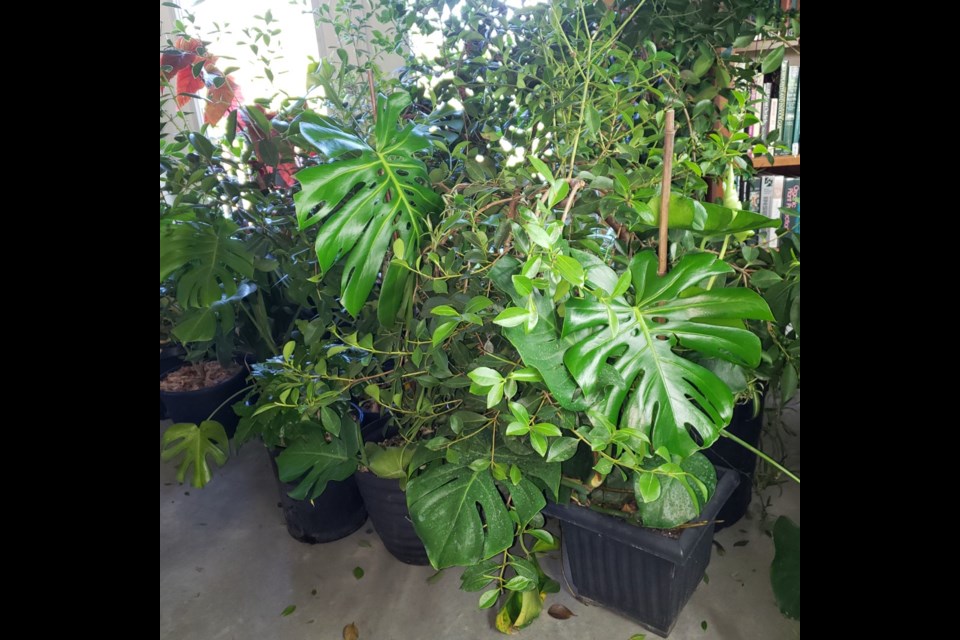When the school bell tolls, it is often the beginning of the fall season. This means the winter season is coming and my tropical sanctuary in my backyard is done for another year. It is disappointing as the plants we subject to indoor living in our homes are not happy – even if they are catered to with grow lights and elevated humidity. Alas, it is one more example of falling short when we are trying to measure up to Mother Nature.
So, if you are like me, during the summer months my home is airy and empty but during the winter months when we are all inside, my home is filled with an amazing array of plants. Kind of a crazy backwards situation but I guess it is the reality of living in Canada on the prairies. So how do I safely bring in my plants and not the vast array of little creatures that also are living outside? Well, it takes some work and a variety of chores.
As the nighttime temperatures begin to drop, my watering is done with a hose and spray nozzle is aimed at washing off the leaves and stems of the plants each time I water. The spider webs quickly come back but the dust and other materials that are adhered to the leaves seem to disappear. Generally, this task occurs a few times and with frequency as other production plants, like tomatoes and peppers, are generally being watered daily.
Before the temperature drops much below 10 C these tasks need to occur to alleviate the chance of cold temperature damage to tropical and subtropical plants. The plants are removed from their shady summer homes and thoroughly sprayed with air via my favourite garden tool – a commercial gas-powered blower. Sometimes a shop vac is also used if there has been a lot of debris accumulating on the surface of the media.
For plants I suspect have enticed soil-borne critters to find a nice winter home, the pots are submerged in tepid water for 15 or 20 minutes. Due to the lack of oxygen, any freeloaders will quickly exit through the drainage holes they entered through and float to the surface of the water where they are skimmed off and return to their less-hospitable home environments. Take care to then place plant trays beneath the plants that are clean or on a solid surface that is free from the smaller critters. Let them drain well.
Any obvious pests are removed and then every plant (except those that are pubescent or fern-like) are then sprayed liberally with Neem which is an extract from the Neem tree and liberally used in the skin/cosmetic industry. For a short time, Neem did make the Pesticide Regulatory list in Canada but is no longer a registered product. Some people love the scent of Neem while others find it quite distasteful so I let the plants dry for a few hours or a day or so but am careful that they are out of direct sunlight and in a safe environment so no new pests make it their home.
When the plants are moved inside, those needing higher light levels are placed under full spectrum grow lights and those that can tolerate lower light levels are also appropriately placed. Please note that my lemons and limes, Bird of Paradise plants, Passion Flowers and those which I want to encourage blooms will need to be given higher light as well as fertilizer appropriate to the type of production of the plant. Also of note is this is the time of year that I plug in the humidifier to ensure that the humidity level in the home stays around 70 per cent. The higher humidity in my home as winter descends makes it more comfortable and those humanoids that dwell here are most definitely happier and healthier!
Hanbidge is the Lead Horticulturist with Orchid Horticulture. Find us at ; by email at [email protected]; on Facebook @orchidhort and Instagram at #orchidhort.
Tune into GROW Live on our Facebook page or check out the Youtube channel GROW



.png;w=120;h=80;mode=crop)
